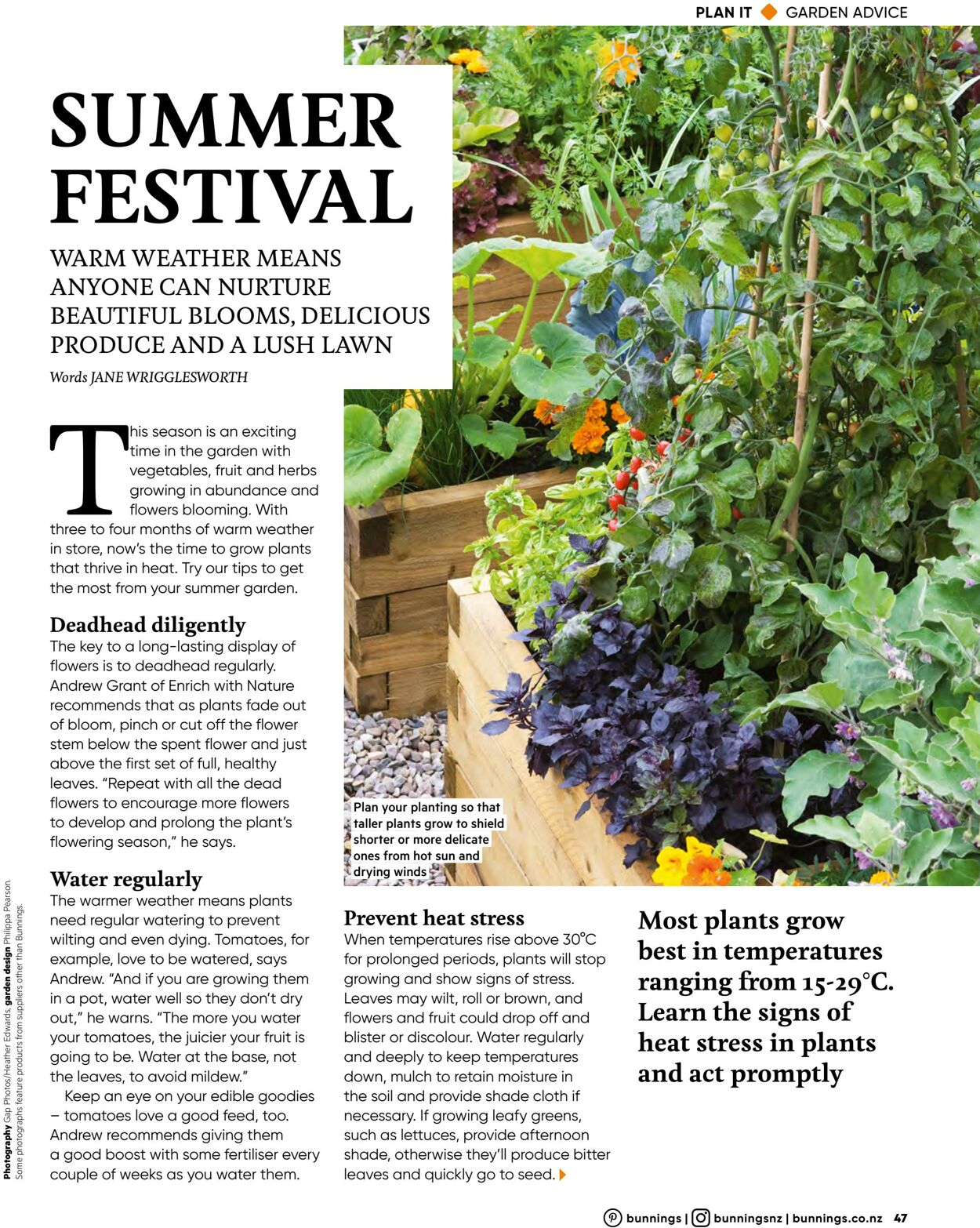













Products in this catalogue
1m suppliers other than Bunnings ‘Some photographs feature prod Photography Gap Photos/! SUMMER FESTIVAL WARM WEATHER MEANS ANYONE CAN NURTURE BEAUTIFUL BLOOMS, DELICIOUS PRODUCE AND A LUSH LAWN Words JANE WRIGGLESWORTH his season is an exciting time in the garden with vegetables, fruit and herbs growing in abundance and flowers blooming. With three to four months of warm weather in store, now's the time to grow plants that thrive in heat. Try our tips to get the most from your summer garden. Deadhead diligently The key to a long-lasting display of flowers is to deadhead regularly. Andrew Grant of Enrich with Nature recommends that as plants fade out of bloom, pinch or cut off the flower stem below the spent flower and just above the first set of full, healthy leaves. “Repeat with all the dead flowers to encourage more flowers to develop and prolong the plant's flowering season," he says. Water regularly The warmer weather means plants need regular watering to prevent wilting and even dying. Tomatoes, for example, love to be watered, says Andrew. “And if you are growing them in a pot, water well so they don't dry out,” he warns. “The more you water your tomatoes, the juicier your fruit is going to be. Water at the base, not the leaves, to avoid mildew.” Keep an eye on your edible goodies — tomatoes love a good feed, too. Andrew recommends giving them a good boost with some fertiliser every couple of weeks as you water them. wee. © Plan your planting so that z taller plants grow to shield ‘shorter or more delicate ones from hot sun and dryi inds & C72 Se Prevent heat stress When temperatures rise above 30°C for prolonged periods, plants will stop growing and show signs of stress. Leaves may wilt, roll or brown, and flowers and fruit could drop off and blister or discolour. Water regularly and deeply to keep temperatures down, mulch to retain moisture in the soil and provide shade cloth if necessary. If growing leafy greens, such as lettuces, provide afternoon shade, otherwise they'll produce bitter leaves and quickly go to seed. » PLAN IT ® GARDEN ADVICE a ONS Bs Most plants grow best in temperatures ranging from 15-29°C. Learn the signs of heat stress in plants and act promptly @®) bunnings |G) bunningsnz | bunnings.co.nz 47
| Name | Details |
|---|